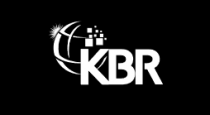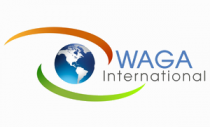Viral Inactivation Market - Global Industry Analysis, Size, Share, Growth, Trends, and Forecast 2017 - 2025
LONDON, Oct. 16, 2017 /PRNewswire/ --
Global Viral Inactivation Market: Overview
Viral clearance study is one of the most important aspect for clinical trials, for manufacturing and commercialization of biopharmaceutical products derived from human and animal sources. Biologics products developed from human, plants and animal resources represents the higher levels of risk for viral contamination as these sources are known to carry number of human as well as other pathogenic viruses. Viral contamination of these biologics products used for treatment of variety of disease can have the several implications right from severe clinical complications to economic loss.
Download the full report: https://www.reportbuyer.com/product/5143250
Viral clearance studies in large scale bio manufacturing process ensures the viral safety of biological products by screening the raw materials, testing the process intermediates and evaluates the capability and effectiveness of manufacturing process to achieve the desired level of viral safety of biologic products. Several methods have been developed and are currently practiced by the biopharmaceutical companies and other end users to ensure the viral safety of biologics products. The methods includes chemical method, radiation method and other methods such as pasteurization and dry & moist heat treatment.
Viral inactivation methods have broad applications in blood & blood components, vaccines production, cell & tissue culture products and other biologics products. These viral clearance method help maximize the production by establishing operational parameters at different stages without hampering product quality.
Global Viral Inactivation Market: Drivers
Rapid growth of biosimilars and biologics market in global biopharmaceutical industry, Regulatory compliances for viral inactivation of biologics products, and increasing number of new drugs approval are some of the key driving factors for the growth of global viral inactivation market during forecast period. In 2015, 51 drugs were approved out of which 45 drugs approved by Food and Drug Administration's (FDA) Center for Drug Evaluation and Research (CDER) and 6 approved by Center for Biologics Evaluation and Research (CBER).
Also In March 2015, the US FDA approved the first biosimilars product for marketing in the United States. Since then large number of biosimilars products have been filed for FDA clearance and many new applications are anticipated to be filed during forecast period.
It is estimated that more than US$ 100 Bn biologics products market will go off patent in next few years which will open the window for the biosimilars products market. This estimated growth in biosimilars market is projected to be key driving factor for global viral inactivation market.
However the high cost of biologics and biosimilars products development and manufacturing and high cost of equipment for viral inactivation are likely to limit the growth of viral inactivation market during forecast period. Emergence of new viruses and development of vaccines against these viruses, development and adoption of newer viral inactivation methods and Growing application monoclonal antibodies and recombinant proteins for treatment of variety of diseases represents the new market opportunity for global viral inactivation market during forecast period.
Global Viral Inactivation Market: Segmentation
Global viral inactivation market is broadly segmented in four segments on the basis of methods used for viral inactivation, by application, by end user and by region. Based on methods, viral inactivation market has been segmented into chemical methods, radiation method, and other methods of viral inactivation. Out of these methods, chemical method of viral inactivation dominated the market.
Chemical method is further sub-segmented into solvent detergent method, use of alkylating agent method and pH concentration method. The Solvent detergent method is projected to account largest market share by the end of 2025.
Chemical method is considered as the robust & efficient method for inactivation of variety of enveloped viruses. Also this method of viral inactivation is found to be economic, safer and delivers higher levels of purity of sample/ media.
These advantages of chemical method have made the end user the first preference for viral inactivation. Radiation method for viral inactivation is projected to witness highest CAGR during forecast period owing to increased adoption of this method by most of blood center in developed countries.
By application, global viral inactivation market is segmented into blood and blood products, vaccines and cell & tissue culture products. Blood and blood products dominated the market due to high cost of viral inactivation per unit of blood and blood components, increasing demand for plasma and platelets for transfusion therapy globally. The end user of global viral inactivation market includes the pharmaceutical and biotechnology companies, blood banks & hospitals, contract research organizations and other end users.
Geographically, the global viral inactivation market is segmented into five regions: North America, Europe, Asia Pacific, Latin America and Middle East & Africa. These regions have been further segmented by countries, methods, applications and end-users. North America dominated the market and is anticipated to lose its market share to Asia Pacific region by the end of 2025.
Global Viral Inactivation Market: Competitive Landscape
The competition matrix section included in the report is likely to assist the existing players to increase their market shares and new companies to establish their presence in the global viral inactivation market. The report also profiles major players in the market based on various attributes such as company overview, financial overview, SWOT analysis, key business strategies, product portfolio, and recent developments. Major companies competing in the global viral inactivation market, and profiled in the report include Parker Hannifin Corporation, Merck & Co., Inc., Shandong Weigao Group Medical Polymer Company Limited, Sartorius AG, Cerus Corporation, Macopharma SA, Terumo BCT, Inc., Thermo Fisher Scientific Inc. and V.I.P.S. SA
Global Viral inactivation Market is segmented as given below:
Global Viral Inactivation Market, by Method
Chemical Method
Radiation Method
Other Methods
Global Viral Inactivation Market, by Application
Blood & Blood Products
Vaccines
Cell & Tissue Culture
Global Viral Inactivation Market, by End-user
Pharmaceutical & Biotechnology Companies
Blood Banks & Hospitals
Contract Research Organizations
Other
Global Viral Inactivation Market, by Geography
North America
Europe
Asia Pacific
Latin America
Middle East & Africa
Download the full report: https://www.reportbuyer.com/product/5143250
About Reportbuyer
Reportbuyer is a leading industry intelligence solution that provides all market research reports from top publishers
https://www.reportbuyer.com
For more information:
Sarah Smith
Research Advisor at Reportbuyer.com
Email: query@reportbuyer.com
Tel: +44 208 816 85 48
Website: www.reportbuyer.com
View original content:http://www.prnewswire.com/news-releases/viral-inactivation-market---global-industry-analysis-size-share-growth-trends-and-forecast-2017---2025-300537255.html
SOURCE ReportBuyer





